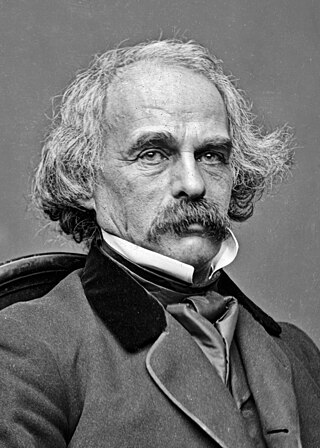
Nathaniel Hawthorne was an American novelist and short story writer. His works often focus on history, morality, and religion.

"The Minister's Black Veil" is a short story written by Nathaniel Hawthorne. It was first published in the 1836 edition of The Token and Atlantic Souvenir, edited by Samuel Goodrich. It later appeared in Twice-Told Tales, a collection of short stories by Hawthorne published in 1837.

"Rappaccini's Daughter" is a Gothic short story by Nathaniel Hawthorne first published in the December 1844 issue of The United States Magazine and Democratic Review in New York, and later in the 1846 collection Mosses from an Old Manse. It is about Giacomo Rappaccini, a medical researcher in Padua who grows a garden of poisonous plants. He brings up his daughter to tend the plants, and she becomes resistant to the poisons, but in the process she herself becomes poisonous to others. The traditional story of a poisonous maiden has been traced back to India, and Hawthorne's version has been adopted in contemporary works.
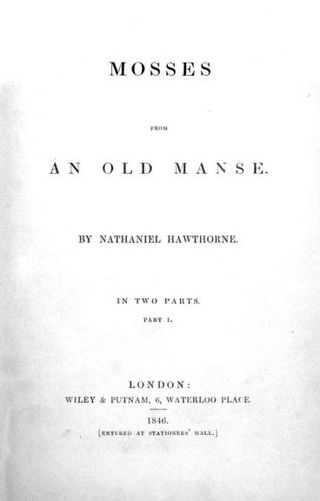
Mosses from an Old Manse is a short story collection by Nathaniel Hawthorne, first published in 1846.

The Snow-Image, and Other Twice-Told Tales is a collection of short stories by American author Nathaniel Hawthorne. Released in late 1851 with a copyright of 1852, it is the final collection of tales by Hawthorne published in his lifetime.
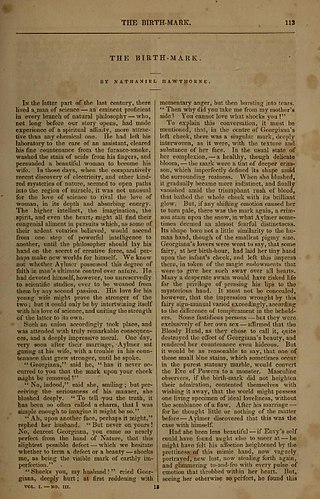
"The Birth-Mark" is a short story by American author Nathaniel Hawthorne. The tale examines obsession with human perfection. It was first published in the March 1843 edition of The Pioneer and later appeared in Mosses from an Old Manse, a collection of Hawthorne's short stories published in 1846.

Twice-Told Tales is a short story collection in two volumes by Nathaniel Hawthorne. The first volume was published in the spring of 1837 and the second in 1842. The stories had all been previously published in magazines and annuals, hence the name.
Jack Hamilton Beeson was an American composer. He was known particularly for his operas, the best known of which are Lizzie Borden, Hello Out There!, and The Sweet Bye and Bye.
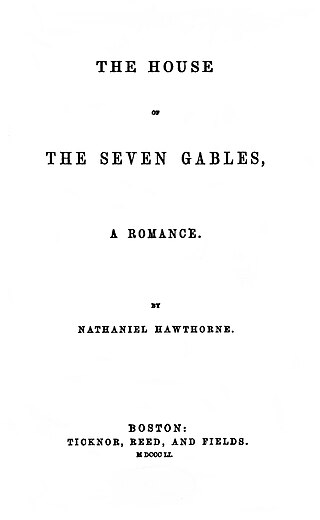
The House of the Seven Gables: A Romance is a Gothic novel written beginning in mid-1850 by American author Nathaniel Hawthorne and published in April 1851 by Ticknor and Fields of Boston. The novel follows a New England family and their ancestral home. In the book, Hawthorne explores themes of guilt, retribution, and atonement, and colors the tale with suggestions of the supernatural and witchcraft. The setting for the book was inspired by the Turner-Ingersoll Mansion, a gabled house in Salem, Massachusetts, belonging to Hawthorne's cousin Susanna Ingersoll, as well as ancestors of Hawthorne who had played a part in the Salem Witch Trials of 1692. The book was well received upon publication and later had a strong influence on the work of H. P. Lovecraft. The House of the Seven Gables has been adapted several times to film and television.
"P.'s Correspondence" is an 1845 sketch by the 19th century American writer Nathaniel Hawthorne.
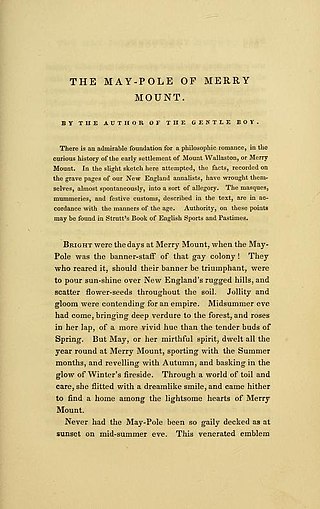
"The May-Pole of Merry Mount" is a short story by Nathaniel Hawthorne. It first appeared in The Token and Atlantic Souvenir in 1836. It was later included in Twice-Told Tales, a collection of Hawthorne's short stories, in 1837. It tells the story of the colony of Mount Wollaston, or Merry Mount, a 17th-century British colony located in what is now Quincy, Massachusetts.
"The Man of Adamant" is a short story written by Nathaniel Hawthorne. It was first published in the 1837 edition of The Token and Atlantic Souvenir, edited by Samuel Griswold Goodrich. It later appeared in Hawthorne's final collection of short stories The Snow-Image, and Other Twice-Told Tales, published in 1852 by Ticknor, Reed & Fields.

"Egotism; or, The Bosom-Serpent" is a short story by Nathaniel Hawthorne published in 1843 in The United States Magazine and Democratic Review in New York.
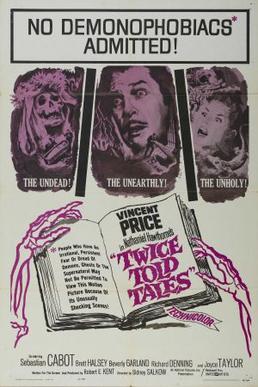
Twice-Told Tales is a 1963 American horror anthology film directed by Sidney Salkow and starring Vincent Price. It consists of three segments, all loosely adapted by producer/screenwriter Robert E. Kent from works by Nathaniel Hawthorne.

"Roger Malvin's Burial" is a short story by American author Nathaniel Hawthorne. It was first published anonymously in 1832 before its inclusion in the 1846 collection Mosses from an Old Manse. The tale concerns two fictional colonial survivors returning home after the historical battle known as Battle of Pequawket.
"A Virtuoso's Collection" is the final short story in Mosses from an Old Manse by Nathaniel Hawthorne. It was first published in Boston Miscellany of Literature and Fashion, I, 193-200. The story references a number of historical and mythical figures, items, beasts, books, etc. as part of a museum collection. Some scholars regard the real-life museum of the East India Marine Society in Salem, Massachusetts, as a model for Hawthorne's fictional museum. The narrator is led through the collection by the virtuoso himself who turns out to be the Wandering Jew.
The Mind's Eye was a publisher which produced dramatized adaptations of various written works, most notably the 1979 National Public Radio radio drama version of J.R.R. Tolkien's The Lord of the Rings and in 1980, The Hobbit. Prominent players include Bernard Mayes, Erik Bauersfeld, John Vickery, Lou Bliss, Gail Chugg, Tom Luce, Ray Reinhardt, James Arrington, Pat Franklyn, Wanda McCaddon, Rick Cimino, Joe Gostanian, John Joss, Karen Hurley, Kevin Gardiner, Darryl Ferreira, and Carl Hague. The company was acquired by Soundelux in 1992.
Gladys Smuckler Moskowitz is an American singer, composer and teacher. She graduated from Brooklyn College with bachelor's and master's degrees, and worked as a teacher, choir director and composer. As Gladys Young she performed in the United States and Europe as a folk singer. In 2003 her chamber opera The Fountain of Youth, based on Nathaniel Hawthorne's "Dr. Heidegger's Experiment," won a special commendation at the Nancy Van de Vate International Opera Competition for Women. Her music is performed internationally.

"The Artist of the Beautiful" is a short story by the American writer, Nathaniel Hawthorne. The story was first published in 1844 and was included two years later in the collection Mosses from an Old Manse published by Wiley & Putnam.













